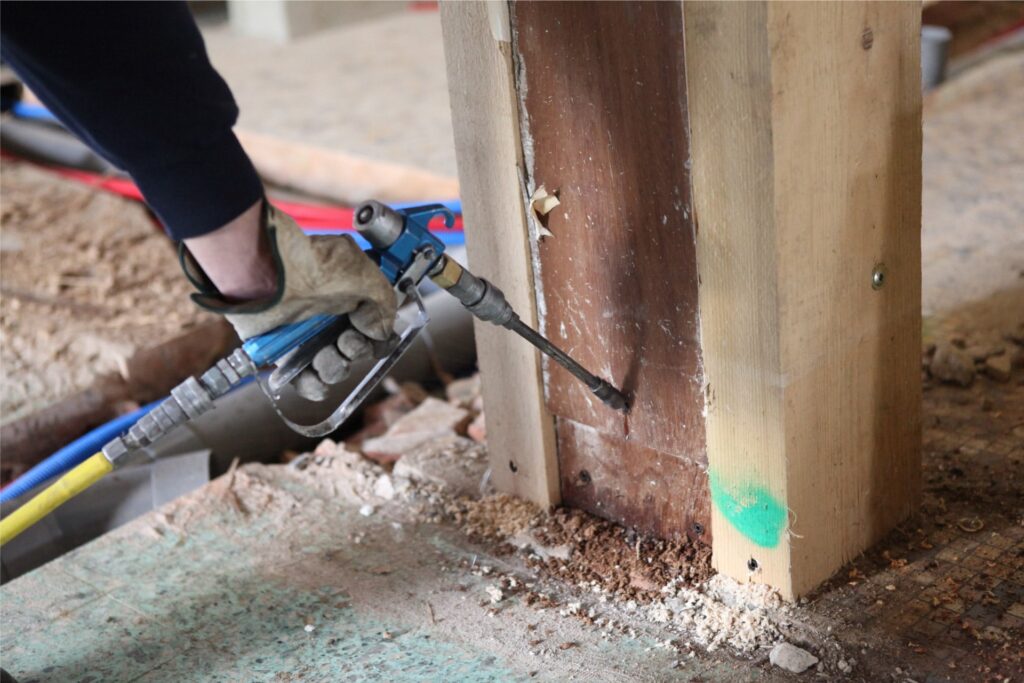Key Takeaways:
- Proper understanding of termite biology and habits is essential for control.
- Early detection of infestation is critical to prevent significant damage.
- Diverse termite treatment options exist, ranging from natural to professional methods.
Table of Contents:
- Introduction
- Understanding Termites
- Signs of Infestation
- Prevention Strategies
- Termite Control Options
- Professional Termite Control
- Conclusion
Introduction
Known for their covert habits and the considerable damage they can inflict, termites present an ongoing battle for homeowners. These wood-destroying insects can silently compromise the integrity of any structure. Understanding their behavior and effectively implementing control methods is particularly important for homeowners in regions known for termite prevalence. As seen in areas such as Cincinnati, the impact of these pests can be formidable, and early intervention is key. Engaging with skilled services specializing in termite control in Cincinnati Ohio can protect your cherished home environment significantly.
Understanding Termites
Termites are social insects with an intricate caste system performing specialized tasks within their colonies. The lifecycle of a termite starts with the queen, whose sole purpose is to reproduce. Workers forage for food and maintain the nest, while soldiers protect against predators. Recognizing each caste’s role enables a more tailored approach in disrupting their activities and eliminating their presence in your home.
Signs of Infestation
The early identification of a termite infestation can restrict the damages incurred. Telltale signs include the appearance of mud tubes on foundation walls, which termites use to travel between their nests and food sources. Additionally, wood that sounds hollow when tapped, visible cracks or distortion in wood structures, and termite droppings resembling sawdust are all unmistakable clues. Vigilance in recognizing these indicators can spur timely action and serve as a defense against widespread damage.
Prevention Strategies
Understanding termite behavior guides the development of effective prevention strategies. Homeowners are encouraged to remove excess wood from around their property, such as old tree stumps and firewood, which can attract termites. Additionally, ensuring proper drainage away from the home’s foundation, reducing humidity with adequate ventilation, and routinely inspecting the home for signs of termites are proactive steps in a comprehensive prevention plan.
Termite Control Options
For termite control, a layered approach is often most effective. Chemical methods, including termiticides, can establish a long-lasting barrier around a property. Conversely, bait systems strategically disrupt the termite’s lifecycle by using poisoned food sources that workers bring back to the colony. Environmental approaches can also be beneficial; for instance, introducing beneficial nematodes into the soil can naturally reduce termite numbers. It’s important to assess the scale and specifics of the infestation to determine the most appropriate control option.

Professional Termite Control
When dealing with termites, the expertise offered by professional pest control services can be invaluable. These specialists are trained to accurately identify termite species and understand their habits, which is critical for effective treatment. Moreover, licensed professionals have access to more potent and precise treatment methods than those available to the general public. Notably, in Cincinnati, experts are well-versed in the local termite species and can offer custom solutions ideally suited to the local climate and conditions.
Conclusion
Termites remain one of the most challenging pests to detect and eradicate. A sound knowledge of their biology and signs of infestation, coupled with effective prevention and control strategies, is essential to protect your home. Homeowners, while capable of implementing certain preventative measures, should consider the benefits of engaging professional termite control services to ensure a termite-free environment. When it comes to the safety and longevity of your home, it pays to be proactive in employing the most effective termite control methods available.






